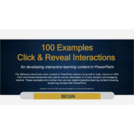
Free PowerPoint Click and Reveal Interactions
- Subject:
- Educational Technology
- Material Type:
- Interactive
- Author:
- Tony Vinckx
- Date Added:
- 03/02/2024

Free PowerPoint Click and Reveal Interactions
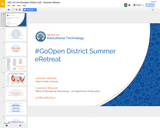
Open Educational Resources presentation

23 Things is a suite of 23 self-paced online modules that cover a range of topics from video editing to basic coding. Each module or 'thing' consists of information, interactive activities, and invitations to try out various open and free software applications and technologies. The modules have been created using H5P and can be downloaded individually as a single H5P file, modified and re-used under a CC-BY-SA licence - simply click on the 'reuse' link at the bottom of each module.
The content was created by Curtin University students as part of a 'students as partners' project.
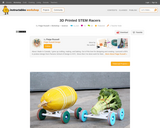
Create 3D printed components for a vegetable/fruit STEM racer!
From the article:
"These 3D printed STEM race cars are the perfect project based learning tool to help teachers get kids excited about science, technology, engineering, math, and nutrition to boot! The racers I show you how to make in this instructable will provide an opportunity to turn almost anything (no kittens or other live things please) into a race car – allowing different sized and weighted objects to illustrate mechanical physics concepts like mass, friction, force, speed, distance, and gravity!"

This is a short lesson plan for discussing/reviewing order of operations with technology integration.

This is an extension activity after discussing cancer or lead into discussing about student choices. Essential QuestionsStudents will be able to to describe behaviors lead to skin cancer and how can it be prevented.Students will be able to explain the risk and reward behaviors.

This is a short description of the ACAT Method.The method uses analogous comparisons by taking examples or situations from everyday life and in consequence the logical or analogous transfer to the scientific problem. The method uses the development of imaginations or “pictures in the head” to develop a view of the analogy; this picture is transferred as a problem-solving idea to the concrete scientific problem. Multimedia material like animations are used to provide a higher level of imagination and to develop the understanding for the discussed problem.

ADDIE - Instructional Design Template.
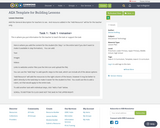
Add the General description for teachers to see. And resource added in the "Add Resource" will be for the teacher only.

Affective Assessment is an assessment based on the student's attitudes, interest and values. Affective Domain .The Affective Taxonomy, which describes objectives that reflects underlying emotions, feelings, or values rather than cognitive or thought complexity

AFFECTIVE-BASED AUTHENTIC ASSESSMENT -The affective domain includes factors such as student motivation, attitudes, perceptions and values. Teachers can increase their effectiveness by considering the affective domain in planning courses, delivering lectures and activities, and assessing student learning
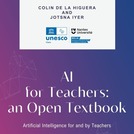
AI and education are not just topics for industry. The education system should be prepared to identify how best to make use of AI in the classroom, reassure teachers, make them responsible users and start an effective teacher-training program. The goal of this textbook is to give teachers the knowledge necessary for deciding if, where and how AI can help.
• How can artificial intelligence impact learning and teaching in my classroom?
• Can it help me do what I want to do with my students?
• How can it change the dynamics and interactions I have with my students?
• How do I even know when it is being used correctly or incorrectly?
• And, what should I be aware of if I want to put it to good use?
Available in English, French, German, Italian, and Slovenian
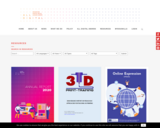
Advancing Media Literacy Education to Counter Online Hate Speech

ANIMATIONيهدف الموقع إلى توفير مجموعة من المواقع والبرامج التي تسهل على المنتج أو المصمم في العثور على أفضل برامج تصميم وإنتاج الأنيميشن وتعريفه على أفضلها, ويحتوي الموقع على أفضل 5 برامج و 5 مواقع لإنتاج وتصميم الأنيميشن
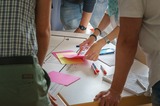
A modified version of a Chalk Talk routine in which the educator provides a prompt for students to put forth ideas, questions, and further develop ideas of others in an effort to advance understanding in relation to a topic.
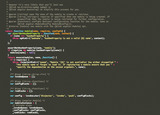
This activity utilizes a Claim-Support-Question framework that allows students to draw on prior knowledge, investigation, and questioning. Designed to be placed within a Java context of enhancing object-oriented programming classes using interfaceses, students will analyze, implement, and support claims regarding three separate interfaces while moving between analysis and program implementation.

This activity is utilized as a method for students to commuincate their current learning, progress their understanding, and then reflect on their current understanding of a topic and share what they now think and the connections they have built.
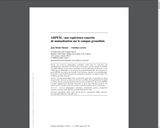
Les ressources pédagogiques numériques créées dans les universités sont actuellement peu mutualisées. Les raisons que nous avançons sont leur manque de visibilité, la fragilité inhérente aux documents numériques, l absence historique de gestion de ce type d objets par les bibliothèques et les questions de propriété intellectuelle. Nous présentons le projet ARPEM, mis en place par Grenoble Universités pour répondre à cette problématique. Les premiers mois de fonctionnement nous permettent de présenter un rapport d étape et les évolutions prévisibles du projet.
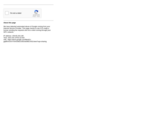
O produto destina-se aos educadores de matemática apresentando roteiros de como abordar os conteúdos regulares escolares no ensino médio interdisciplinarmente e balizados nas competências e habilidades extraídas da BNCC, utilizando-se de artefatos utilitários locais como tema gerador de conteúdos em Matemática e Ciências Ambientais. Desta forma, espera-se com essa prática educacional diferenciada ressignificar o ensino da matemática a partir da construção coletiva do pensar, saber e fazer matemático expressos nos artefatos da cultura local.
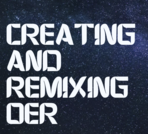
This lesson supports faculty in exploring the different ways to engage with OER and contribute to the Open Education community. The cover image of this lesson was created by Joanna Schimizzi in Canva and is licensed CC-BY. The image has a black background with galaxy-type stars and says "Creating and Remixing OER" in white capital letters.